Professional Engineering Cover Letter for Job Application
Dear Hiring Manager,
I am writing to express my interest in the Mechanical Engineer position at [Company Name]. With over five years of experience in designing and implementing mechanical systems, I have developed a solid foundation in project management, problem-solving, and teamwork.
My recent role at [Previous Company] involved leading a team to design energy-efficient HVAC systems, resulting in a 15% reduction in operational costs. I am confident that my technical expertise and dedication to innovation would make me a valuable asset to your team.
I look forward to the opportunity to discuss how my skills and experience align with your organization's goals. Thank you for considering my application.
Sincerely,
[Your Name]
Entry-Level Engineering Cover Letter
Dear [Hiring Manager's Name],
I recently graduated with a Bachelor’s degree in Civil Engineering from [University Name] and am excited to apply for the Junior Civil Engineer position at [Company Name]. During my studies, I completed internships that provided hands-on experience in structural analysis and project planning.
I am eager to bring my enthusiasm and foundational knowledge to your engineering team and contribute to innovative projects. I would welcome the chance to discuss how I can support your company's objectives.
Thank you for your time and consideration.
Best regards,
[Your Name]
Engineering Internship Cover Email
Hello [Recipient's Name],
I am currently pursuing my Bachelor’s degree in Electrical Engineering and am very interested in the summer internship opportunity at [Company Name]. I have gained practical experience through lab work and small-scale projects involving circuit design and automation systems.
I am enthusiastic about learning from your team and contributing to real-world engineering challenges. Please find my resume attached for your review.
Thank you for your time and consideration.
Kind regards,
[Your Name]
Creative Engineering Cover Letter for Innovation Role
Dear Innovation Team,
I am thrilled to apply for the Design Engineer role at [Company Name]. My experience in 3D modeling, prototyping, and creative problem-solving has allowed me to bring ideas from concept to production efficiently.
I thrive in environments where creativity meets engineering precision and would love to contribute to your groundbreaking projects. I look forward to discussing how my skills can enhance your team.
Sincerely,
[Your Name]
Provisional Engineering Reference Letter
To Whom It May Concern,
This letter serves as a provisional reference for [Employee Name], who has been working with us as a Software Engineer for the past two years. During this time, they have consistently demonstrated strong coding skills, problem-solving ability, and a commitment to team success.
We are confident in their technical competence and professionalism. This provisional letter is issued pending the formal reference documentation.
Sincerely,
[Your Name]
[Position]
[Company Name]
Quick Engineering Job Referral Email
Hi [Recipient's Name],
I hope you’re doing well. I wanted to refer [Candidate Name] for the Mechanical Engineer role at [Company Name]. They have a strong background in design and project management, and I believe they would be a great fit for your team.
Please let me know if you need more information or their resume.
Thanks,
[Your Name]
What is an Engineering Cover Letter and Why You Need One
An engineering cover letter is a formal or semi-formal document sent alongside your resume to potential employers. Its main purposes are:
- Introduce yourself and highlight your skills relevant to the engineering role.
- Showcase achievements and experience that make you a strong candidate.
- Provide context and narrative that a resume alone cannot convey.
- Demonstrate communication skills, which are essential for engineering roles.
Who Should Write and Send an Engineering Cover Letter
- Job applicants seeking employment in engineering fields (civil, mechanical, electrical, software, etc.).
- Students or recent graduates applying for internships or entry-level roles.
- Professionals requesting internal transfers or promotions within their engineering company.
- Freelance engineers submitting proposals for contracts or projects.
Whom Should Receive the Letter
- Hiring managers and HR personnel responsible for recruitment.
- Engineering team leads or project managers when roles require technical validation.
- University coordinators or internship supervisors for student applications.
- Referral contacts or professional connections forwarding your letter to relevant stakeholders.
When to Send an Engineering Cover Letter
- When applying for a job posting or advertised engineering position.
- When responding to unsolicited inquiries or expressing interest in a company.
- Prior to internship placements or co-op programs.
- During internal transfer applications or promotions.
- When requesting a reference, recommendation, or project collaboration.
How to Write an Engineering Cover Letter
- Research the company, role, and team requirements thoroughly.
- Start with a professional greeting and a clear subject line (for emails).
- Introduce yourself and summarize your relevant experience.
- Highlight achievements, skills, and contributions specific to the role.
- Close with a polite call to action, showing enthusiasm for an interview or discussion.
- Proofread for grammar, clarity, and technical accuracy before sending.
How Long and Detailed Should the Letter Be
- Ideal length: 250–400 words for standard applications.
- Internship or quick referral emails: 100–200 words.
- Avoid unnecessary repetition of your resume content.
- Focus on quality over quantity—every paragraph should serve a clear purpose.
Formatting Guidelines
- Tone: Professional, yet adaptable depending on the context (casual for referrals, formal for official job applications).
- Style: Concise, structured, with clear paragraphs.
- Mode of Sending: Printed letter for formal applications; email or online submission for digital applications.
- Attachments: Resume, certifications, and portfolio links if applicable.
- Etiquette: Avoid overly casual language, maintain proper salutations and closing statements.
Requirements and Prerequisites Before Sending
- Updated and tailored resume.
- Knowledge of the company and specific role requirements.
- Documentation of achievements, certifications, or relevant projects.
- Clear understanding of your career objectives and technical strengths.
- Professional email address and contact information.
After Sending / Follow-up
- Wait 7–10 days before sending a polite follow-up email if no response.
- Confirm that attachments were received and are accessible.
- Prepare for potential interview by reviewing projects, skills, and common engineering questions.
- Maintain professionalism in all follow-up communication.
Common Mistakes to Avoid
- Using generic templates without customization.
- Overloading the letter with technical jargon without clarity.
- Repeating the resume word-for-word.
- Typos or grammatical errors, especially in technical terms.
- Ignoring the recipient’s name or role when addressing the letter.
Pros and Cons of Sending a Cover Letter
Pros:
- Demonstrates initiative and professionalism.
- Provides a platform to highlight skills and achievements beyond the resume.
- Builds a personal connection with the hiring manager.
Cons:
- Time-consuming to tailor for each application.
- May be overlooked if the employer prioritizes resumes.
- Risk of mistakes if rushed or not proofread carefully.
Tips and Best Practices
- Customize each letter for the specific company and role.
- Keep paragraphs concise and focused on measurable achievements.
- Use active verbs to describe your responsibilities and successes.
- Include links to portfolios, projects, or GitHub repositories where relevant.
- Ask a peer or mentor to review your letter before sending.
Elements and Structure of an Engineering Cover Letter
- Greeting: Directly address the hiring manager or recipient.
- Introduction: Briefly explain who you are and the purpose of the letter.
- Body: Highlight relevant skills, achievements, and experience.
- Closing: Express enthusiasm and request for an interview or discussion.
- Attachments: Resume, certifications, portfolio, or reference letters.
- Optional: Call-to-action paragraph encouraging further engagement.
Compare and Contrast with a Resume or CV
- Cover Letter: Narrative style, highlights motivation, context, and personal achievements.
- Resume/CV: Concise, factual, lists education, skills, and work experience.
- Alternative: LinkedIn messages or referral emails can substitute a cover letter for networking purposes.
- Similarities: Both should be tailored to the role and accurately represent your qualifications.
Frequently Asked Questions (FAQ)
Q: Do all engineering jobs require a cover letter?
A: Not always, but sending one increases your chances of being noticed.
Q: Can I send the same letter to multiple companies?
A: Customization is recommended; a generic letter may appear careless.
Q: Should I include salary expectations?
A: Only if requested in the job posting.
Q: How do I address unknown hiring managers?
A: Use “Dear Hiring Manager” or research the company to find the appropriate contact.
Q: Is a digital signature necessary for email submissions?
A: Not required, but a professional sign-off with your full name and contact info is essential.
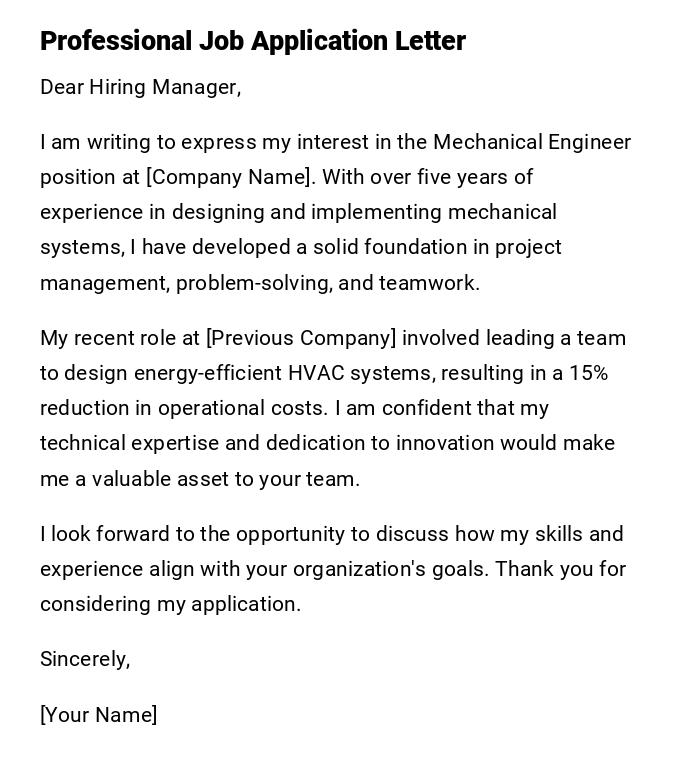
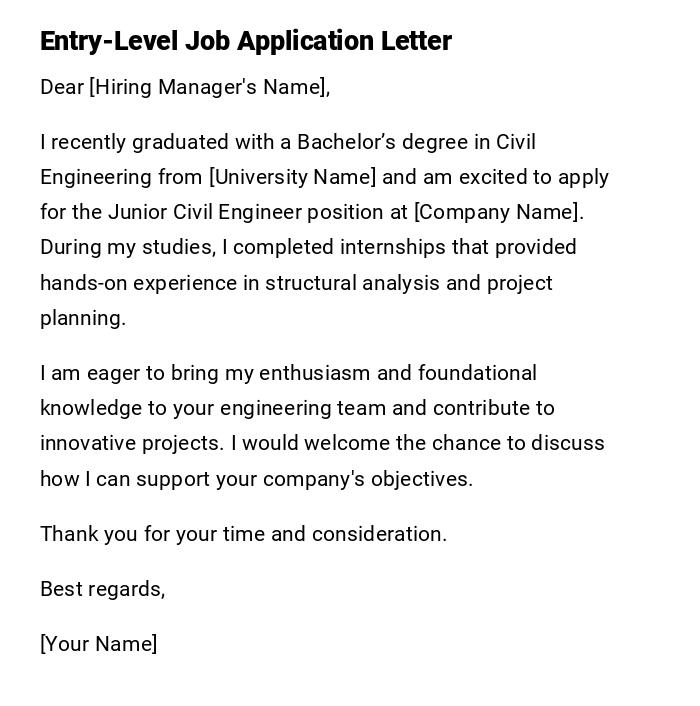
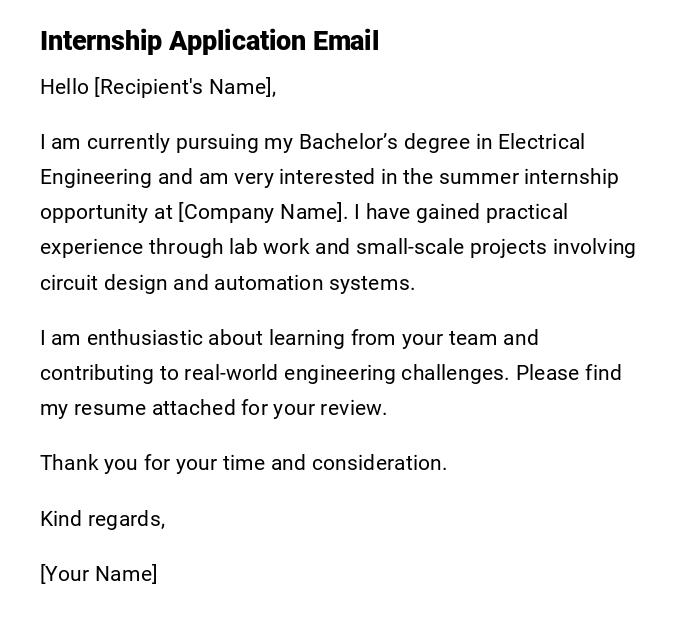
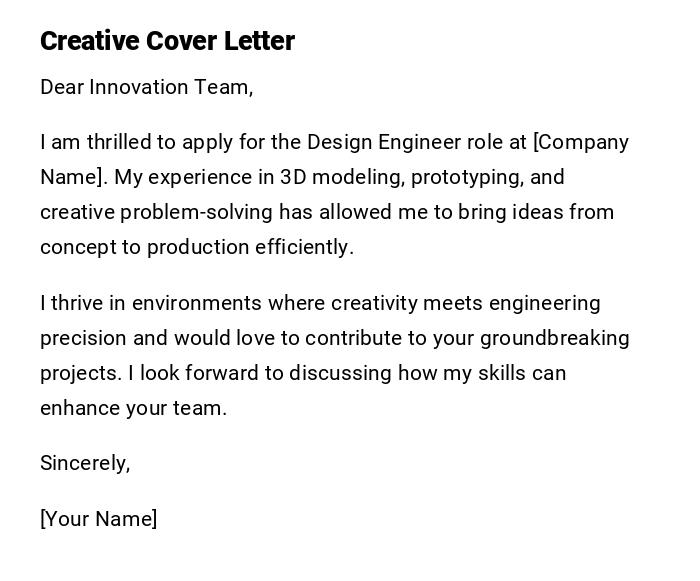
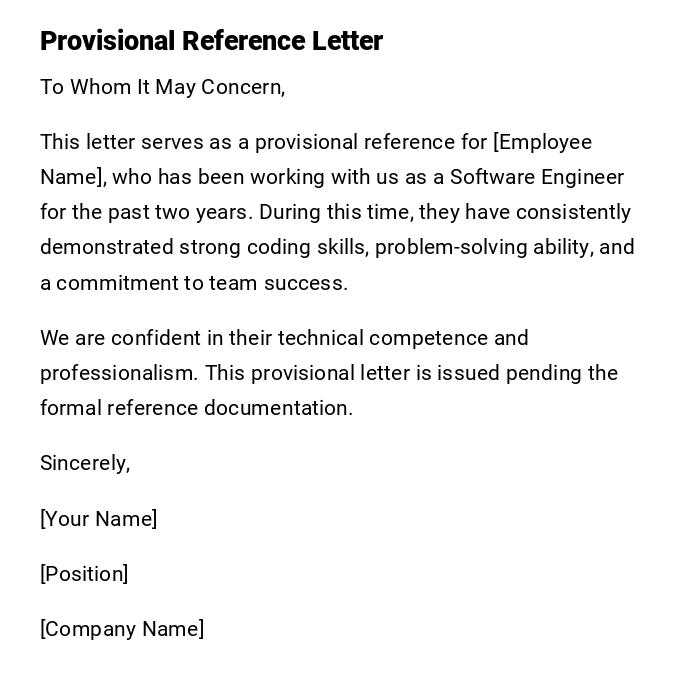
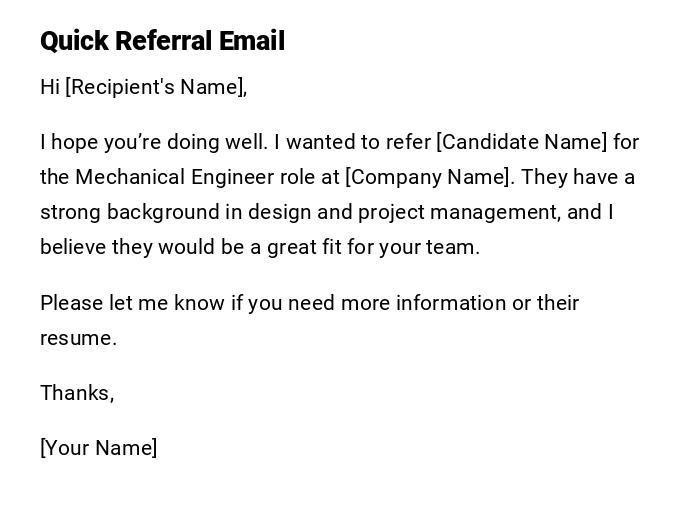

 Download Word Doc
Download Word Doc
 Download PDF
Download PDF